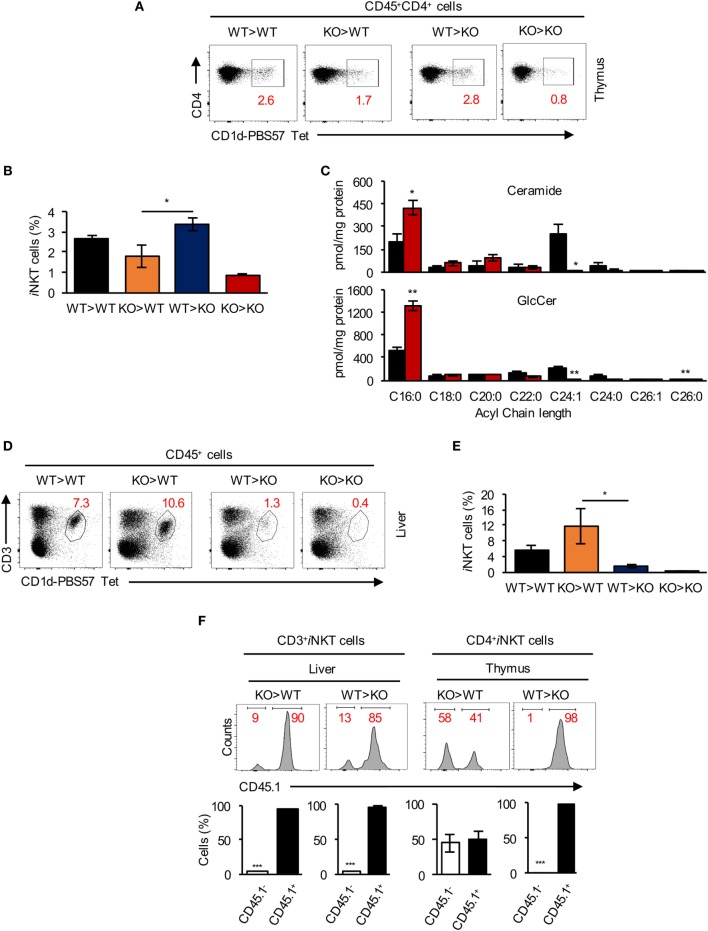Figure 5.
Survival signals from non-hematopoietic cells are required for invariant NKT (iNKT) cell survival in the liver. (A) Representative flow cytometry plots showing the frequency and (B) average frequency of iNKT (out of total CD4+ hematopoietic cells) in the thymus of bone marrow (BM) chimeras. (C) Quantification of the acyl chain lengths of ceramide (upper panel) and glucosylceramide (GlcCer) (lower panel) in thymocytes of wild-type (WT) (black) and ceramide synthase 2 (CerS2) null (red) mice. (D) Representative flow cytometry plots showing the frequency and (E) average frequency of CD3+ iNKT cells (out of CD45+ cells) in the liver of BM chimeras. (F) Representative flow cytometry histograms of BM chimeras, where WT cells are CD45.1+ and CerS2-null cells are CD45.1− [numbers in red indicate the percent of total CD3+ iNKT cells in liver and CD4+ iNKT cells in thymus (upper panel)]. Quantitation of CD45.1 staining of iNKT cells in liver and thymus of CerS2-null mice (lower panel). n = 2–4 in each group of mice. The experiment was repeated twice with similar results.

